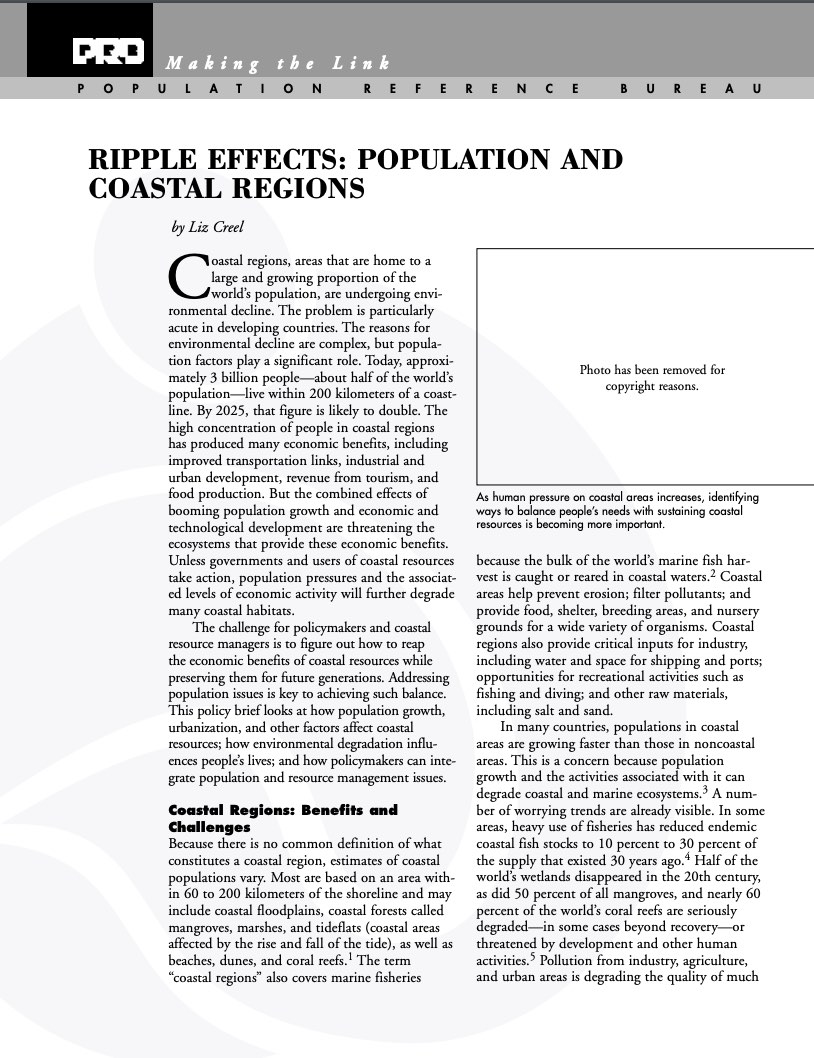Distilled Demographics: The Birth Rate
(Video Series) The birth rate is one of the most basic and important measures in demography. But its relevance is not limited to just demographers.
(Video Series) The birth rate is one of the most basic and important measures in demography. But its relevance is not limited to just demographers.

The COVID pandemic impeded data collection for the United States’ premier survey of local communities. How can we measure a changing America?
(Avril 2004) Les êtres humains sont devenus une force environnementale d'importance croissante ces dernières 10 000 années.
(2004) A new comparative study using nationally representative information on domestic violence in nine developing countries finds that women whose fathers abused their mothers are twice as likely to suffer domestic abuse themselves.

(2003) Coastal regions, areas that are home to a large and growing proportion of the world's population, are undergoing environmental decline.
(2015) China has abandoned its one-child policy, according to news reports. So what would be the demographic implications of this two-child policy?
In 2008, the United Nations announced that 50 percent of the world's population now lives in urban areas, a milestone in demographic history.